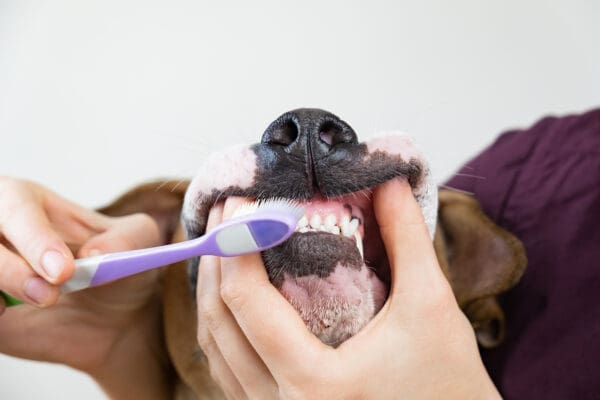
11401 NE 195th St. Bothell, WA 98011
(425) 486-9000 PHONE (425) 486-9002 fax
Natural History
The green iguana (Iguana iguana is large bodied herbivore native to Central America, South America, and the Caribbean. It is also an introduced species in much of the southern United States, where it is considered to be a pest. In the wild, green iguanas are arboreal lizards that prefer to stay close to river banks. They are excellent swimmers.
Adult green iguanas may reach 7’ in length, and can weigh as much as 20 lbs. They can live to be up to 25 years with good husbandry and medical care. Unfortunately, as they enter adulthood, green iguanas are commonly rehomed, and many pass away within the first few years of acquisition due to improper husbandry. The space, lighting, and heating requirements for these lizards are challenging for any hobbyist to maintain, but they are rewarding pets if proper husbandry is achieved.
Husbandry
Housing: Captive iguanas should be provided with the largest enclosure possible. Their phenomenal growth rate will quickly cause them to outgrow any glass aquarium they might be placed in. In less than 12 months, your iguana will likely require a cage that is 3’W x 3’D x 6’H. For a matured individual over 6’ long, a cage at least 9’ long will be necessary. Understandably, most iguana owners will eventually need to build their own iguana habitats, or convert an entire room into an iguana sanctuary. When designing a cage, choose solid walls to keep in heat. Height is important, as iguanas are arboreal. Provide several limbs, or wooden “trees” for the iguana to climb up on. Avoid using live houseplants; they will quickly become consumed and destroyed, and many are toxic. Choose substrates based on their feasibility when it comes to cleaning time, such as newspaper, reptile carpet, vinyl sheets, tile, alfalfa pellets, or soil. Do not use sand, wood shavings, corn cob bedding, or walnut chips as substrate, as they may be eaten, and are not digestible.
Heating: During the daytime, iguanas should have a basking spot of 95F, with the ambient temperature being in 85-90F range. At night, the temperatures can safely drop to 80-85F. Mercury vapor bulbs, which produce both necessary UV light and heat, are best used during the day, whereas ceramic heat emitters, which only produce heat and have no light, are excellent to use at night.
Lighting: UV lighting is necessary for the health of all iguanas, and it comes in two equally necessary forms. UVA rays are radiation waves that are needed to promote natural behaviors and stimulate appetite. UVB rays are the other type of radiation waves, necessary for the metabolism of calcium and bone health. A good way to tell the two UV rays apart is “A for appetite, B for bones.” UVB is only provided in 2 different kinds of lights: florescent lights specifically designed for UVB output in reptiles, and mercury vapor bulbs. Some bulbs sold in pet stores are labeled as being “full spectrum,” and packaging may erroneously lead you to believe that a bulb that produces UVA only is enough for a iguana, but unless the box specifically states that it offers UVB lighting, it will not be what your pet needs. All UVB bulbs will provide UVA, but not all UVA bulbs will provide UVB.
Florescent bulbs for reptiles come in a few different styles, the most common being the coil variety, and the tubular strip variety. Coil fluorescents have the shortest lifespan of all UVB bulbs, and even though they may continue to produce visible light for years, the UVB they provide will only last about 3-4 months. Strip fluorescents are similar, but can last 4-6 months. Mercury vapor bulbs are among the longest lasting UVB sources on the market (with the potential to produce UVB for up to a year); these bulbs also produce heat, and are an excellent choice for a basking bulb for iguanas. All bulbs should be replaced every 4-6 months, unless their output is being routinely measured with a UVB meter to ensure that they are producing adequate spectrum of lighting. It is important to allow the your iguana to get within 12 inches of any UVB light source you do provide, as the distance of the light can greatly affect the amount of UVB absorbed. Regardless of what artificial light you provide, nothing beats the power of the sun. Supervised outdoor time during warm, summer days will benefit your iguana tremendously.
Humidity: Green iguanas prefer moderate humidity, around 70%. Humidity can be maintained through the use of misters, humidifiers, and daily soaking. Provide a water bowl in the iguana’s enclosure large enough to allow its whole body inside, and change it daily since most iguanas will eliminate in it. Daily soaks are recommended, not only for hygienic purposes, but also to allow adequate hydration. A well-hydrated iguana is less susceptible to kidney disease. Iguanas enjoy swimming, and often look forward to bath times.
Diet
Careful attention to an iguana’s diet is imperative to their success in captivity. Green iguanas are strictly herbivores, and at no point should they be fed eggs, dog or cat food, insects, or rodents, regardless of whether or not they eat them. Green iguanas that are regularly fed animal and insect products are susceptible to kidney disease, due to the fact that their bodies are not designed to process the proteins contained in these foods.
It is important to provide a diet that is as close to a green iguana’s natural diet as possible. Variety is crucial, as is the proper choice of which vegetables to offer. The diet listed below should be a starting point, but it is highly recommended that you visit the website www.anapsid.org for more in-depth information on how to properly feed your iguana.
Feed hatchling iguanas twice daily. Juveniles up to 24 inches can be fed 5-7 times weekly, and adults 3 to 4 times weekly. Young iguanas need their food finely chopped.
- Leafy greens: This should make up 40-50% of the diet. In the wild, green iguanas are primarily leaf eaters, and can consume 50 different types of plants per year. Choose as wide a variety as possible when making food for your pet. Collard greens, mustard greens, turnip greens, dandelion greens, watercress, bok choy, escarole, Swiss chard, parsley, kale, spinach, romaine, carrot and beet tops are all excellent choices. Avoid pale greens such as iceberg lettuce or celery tops. Vary the vegetables used, and use spinach sparingly as it can bind up calcium within the body.
- Other vegetables: This should make up 30-40% of diet. Frozen/thawed mixed vegetables, winter and summer squashes, squash, zucchini, sweet potato, bell pepper, broccoli, okra, carrot, pumpkin, snap peas, snow peas, green beans, cactus pads, and brussels sprouts are all appropriate. Vary the vegetables used.
- Fruit: This should make up <10% of the diet. Iguanas regularly enjoy bananas, blueberries, grapes, papayas, melons, strawberries, kiwis, mangos, oranges, peaches, pears, and figs. They will also consume the flowers of pesticide-free dandelions, hibiscus, nasturtium, and rose. These items should be fed sparingly, not as the bulk of the diet, as they are mineral-poor. Think of them more as garnish rather than an actual portion of a meal.
- Pellets: This should make up <5% of the diet. Iguana pelleted diets do not offer complete nutrition for this species at this time, but they can serve as a supplement to the total diet. They can be fed either soaked or dry. Look for Mazuri’s Herbivorous Reptiles pellets and ZooMed’s iguana pellets. You can also occasionally feed an iguana high quality alfalfa pellets manufactured for small animals.
- Legumes: This should be fed in a limited amount, primarily to younger iguanas, and should make up <5% of the total diet. Boiled pinto beans, kidney beans, navy beans, and lentils can be offered as an occasional supplement; do not feed these raw.
- Calcium: Captive iguanas require additional calcium supplementation. Calcium powder is manufactured by many different brands on the market (Fluker’s, Exo-Terra, Rep-Cal, etc; whatever brand you choose, select a product that does not contain phosphorous or vitamin D3. It should be sprinkled onto the food 4-5 times weekly for iguanas less than 1 year old, and 2-3 times weekly for adults.
- Multivitamin: Vitamins are also important to promote healthy body function. There are many brands that make multivitamins appropriate for reptiles (Herptivite, Reptivite, Vionate, etc). Vitamins (especially fat soluble vitamins such as A and D) are easy to overdose, and too much vitamin supplementation can actually be harmful. As a general rule, a reptile multivitamin supplement should be sprinkled on the food twice weekly for iguanas less than 1 year old, and twice monthly for adult iguanas.
Handling
Always handle these powerful, large lizards with respect and caution. Iguanas have very sharp claws, can pack a powerful bite, and are able to use their tails as a painful whip in self defense. It is important to socialize them appropriately when they are young to reduce the risk of severe aggression displays/attacks once they mature. Remember that even normally tame iguanas can become aggressive during their perceived breeding season.
Short periods of calm socializing, just 10 minutes a day at first, can help condition your iguana to accept your presence and touch. Baby green iguanas are typically fractious animals, and can easily become stressed when handled for too long. The three rules to keep in mind when handling young iguanas are: provide support, be gentle, and don’t grab. Babies can be held in one hand, whereas adults will be able to be supported on one forearm. Particularly aggressive iguanas can be captured in an “iguana taco” by wrapping a towel around its body.
Common Medical Issues
Nose Rubbing: Young, active, or aggressive iguanas will sometimes rub their snouts against the wire or glass of their cages, eventually causing open wounds. Nose rubbing usually indicates that an iguana feels exposed or insecure in its enclosure. Providing more seclusion may help prevent this behavior, but any open wound should be addressed by a reptile veterinarian before it becomes infected or abscessed.
Kidney Disease: Fairly common in captive iguanas, kidney disease is suspected to be the result of improper diet and inadequate hydration. Oftentimes it is a fatal diagnosis, because once symptoms become noticeable, the animal is too sick for recovery. Signs include anorexia, weight loss, lethargy, swollen abdomen, and frequent drinking and urination.
Trauma: Due to the spindly design of the green iguana’s tails and toes, and their penchant for thrashing around when they feel in jeopardy, tail breaks occasionally occur and toes are occasionally lost. Some tails will regenerate, but the tail will never be as long or colorful as the original. Toes can heal, but splints and bandages may be necessary.
Hormonal Aggression: Iguanas that have reached sexual maturity frequently exhibit aggression, and can become quite dangerous in the hands of inexperienced owners. Their bites can be powerful, and a 6-foot lizard that decides to charge you can be quite scary to see. There are many training techniques and husbandry changes that one can employ in order to address the issues that cause aggression, but a behavioral consultation with your reptile veterinarian may be required.
Egg Binding: Iguanas, like chickens, will sometimes lay eggs even when they have not bred with a male. Sometimes, due to a variety of complications, the female will be unable to lay these eggs, and can quickly die if they are not passed. Causes for egg binding include calcium deficiencies, anatomical defects, lack of a nesting box, or improper temperatures. Treatment may require surgical removal. Lethargy and straining are signs that your female may be egg bound.
Metabolic Bone Disease: Also known as MBD, this is a term used to describe a number of disorders related to the weakening of bones or impaired system function caused by an imbalance of calcium, phosphorus, and/or vitamin D3. It is one of the most commonly seen health problems in green iguanas, and is often the result of inadequate levels of calcium in the diet, or improper UVB lighting (which is essential for calcium absorption). Symptoms of MBD range from the mild (lethargy, lack of appetite) to the severe (rubbery bones, spinal deformities, tremors and twitching of the extremities). Veterinary care is a must for any iguana with suspected MBD.
March 30, 2015
Content of this Care Sheet Courtesy of:
The Center for Bird and Exotic Animal Medicine
11401 NE 195th St. Bothell, WA 98011
(425) 486-9000 PHONE (425) 486-9002 fax



